

Matt Campbell
2026 MG U9 review
6 Hours Ago
The Purosangue is Ferrari’s first ever SUV. With some of the world’s most iconic cars to its name, how does the Purosangue stack up?

Contributor
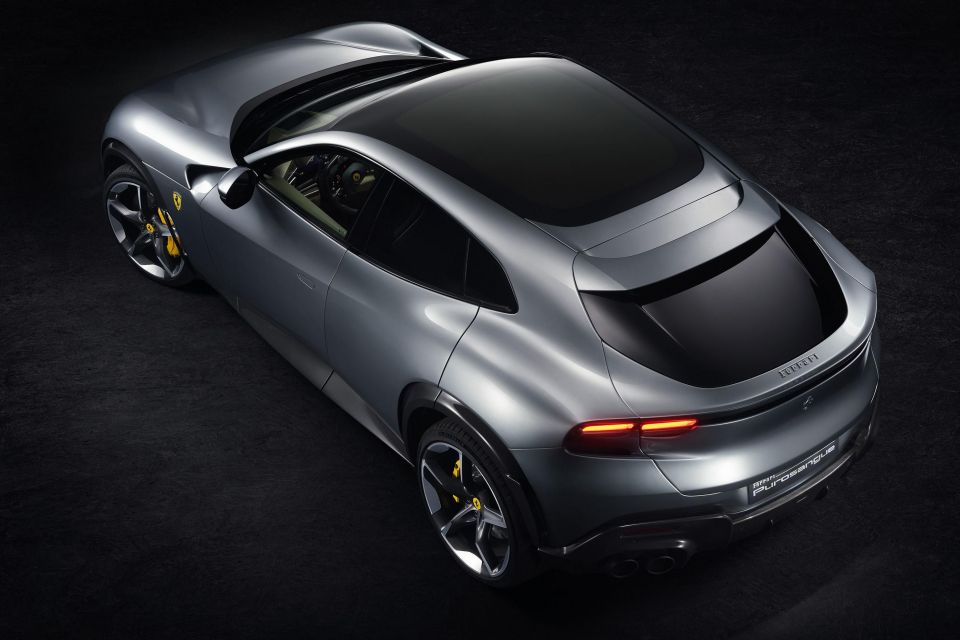

Contributor
Ferrari is renowned as an exclusive manufacturer of sports cars, and was until very recently one of the few brands that has never produced a four-door vehicle.
Car manufacturers must adapt to customer tastes, however, and with SUV sales booming, even the most ardent sports car marques must keep with the times to remain relevant. Ferrari is no exception.
Purosangue translates to pureblood, or thoroughbred. While Ferrari markets it as ‘an authentic Ferrari four-door sports car’, no reference at all is made in the official release to the Purosangue being an SUV, a crossover, or any other type of utility vehicle.

Instead, the brand says the Purosangue is simply an extension of Ferrari DNA into a new vehicle that can comfortably seat four adults, without compromise to performance or dynamics.
This philosophy also underpins the front midship engine placement (an engine mounted in the front of the car, but behind the front axle) of the Purosangue.
Archetypal of traditional Ferrari GTs including the Roma, Portofino, and GTC4 Lusso and FF models, the Purosangue retains what Ferrari engineers claim is an ideal 49:51 front:rear weight distribution.
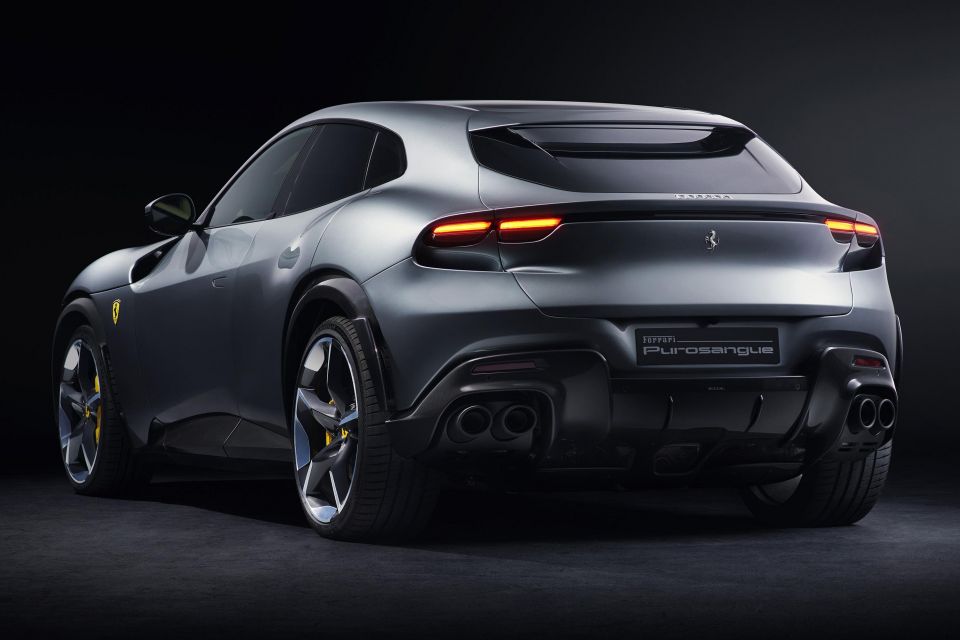
The side profile is arguably the most distinctive element of the Purosangue, especially compared to ultra-premium SUVs such as the Lamborghini Urus, Aston Martin DBX, and Bentley Bentayga.
The best way to explain Ferrari’s approach is to draw two imaginary lines, with one bisecting the Purosangue vertically just behind the front wheel arch, and another bisecting the side profile horizontally just below the glasshouse.
Unlike more traditional SUVs, the front mid-engine configuration of the Purosangue allows for a two-box design similar to the Ferrari Roma.
Positioning the engine behind the front axle allowed the designers to give the front of the bonnet a curved shape with a steep dip, and facilitates separation from the ‘second box’ starting at the raked A pillar and encapsulating the rest of the car.
Another factor enabling this two-box profile is the presence of rear-hinged doors, or ‘welcome doors’ in Ferrari speak.
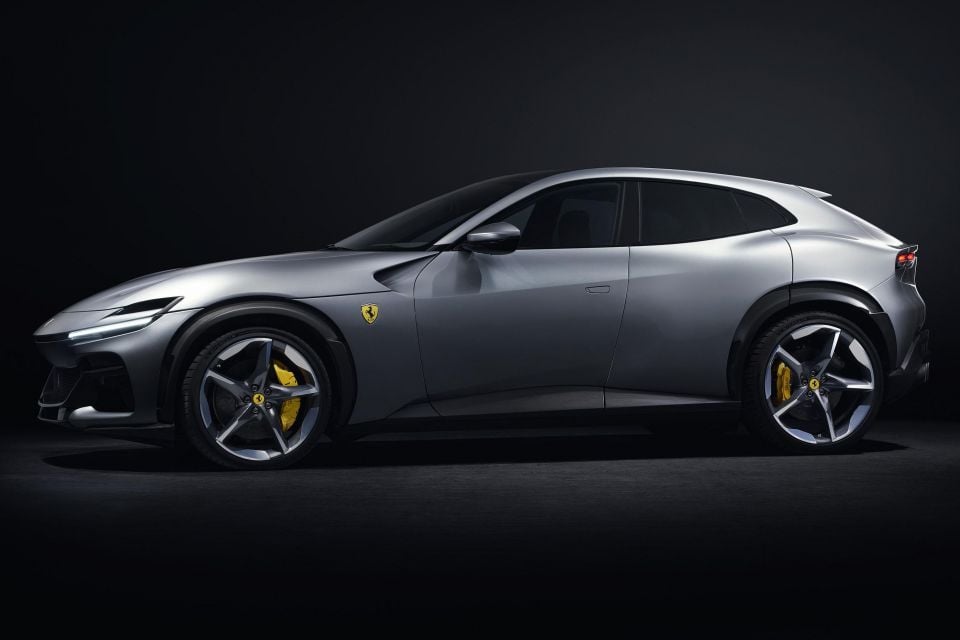
This allows the rear door to be shorter without compromising the opening angle (and thereby ingress and egress).
The second line presents a clear division between soft and sharp surfacing. Ferrari describes this as splitting the design into ‘two separate and distinct levels: the lower, more technical underbody and the gloriously sinuous, imposing upper body’.
This manifests with the lower part of the car’s body featuring sharp creases, such as the upwards kick around the lower side sill, and an almost parallel upwards sloping line emanating from the side air duct and flowing into the rear door.
Just below the glasshouse, Ferrari has transitioned the surfacing to a smoother, softer approach, demonstrated best by the pronounced haunches that draw inspiration from other models in the range including the aforementioned Roma, as well as the 296 GTB.

These also evoke memories of classic 1960s sports cars, while accentuating the pinched rear glasshouse and C pillar.
Another key design aspect delivering a functional benefit is what Ferrari terms the ‘aerobridge’, or the system of ducts allowing air to flow from a vent located above the headlights, through the front wheel arches and out of the duct located ahead of the front door.
Ferrari claims this reduces drag, but stylistically it works to draw the eye forward and lower the car’s silhouette.
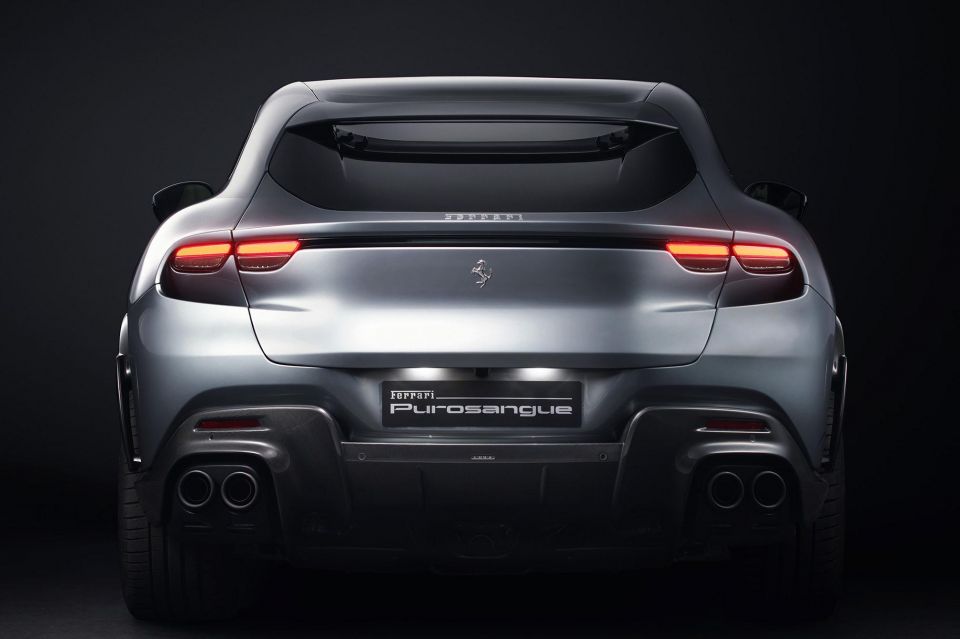
The front and rear are heavily inspired by the Roma, and make use of a similar design language that is translated to a more practical, higher-bodied silhouette. This goes beyond merely stretching the same front end to the Purosangue’s dimensions, however.
While the Roma features a body-coloured upper front grille, the Purosangue replaces this with a body-coloured clamshell sitting above a larger, lower front mesh bumper, for what Ferrari deems a more ‘technical’ aesthetic.
Although the rear features a similar split tail light architecture to the Roma, the addition of a significantly larger lower rear diffuser and a stronger horizontal cut-line above help create a wider, more muscular look.
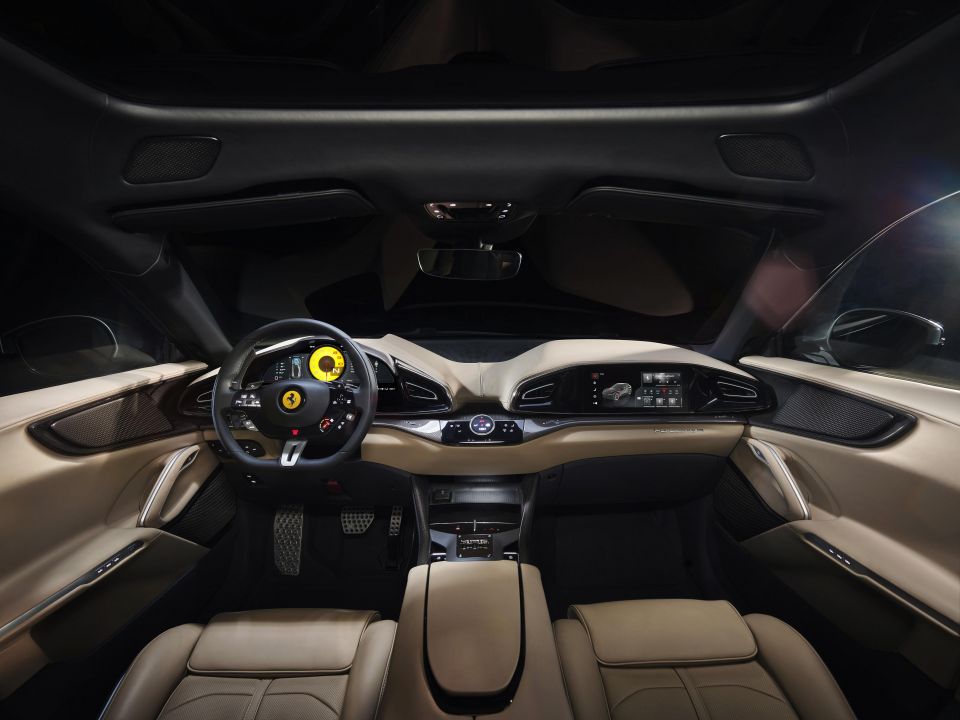
When most car manufacturers design SUVs to complement their sports cars, the interior is more family oriented, with a more balanced approach that provides a spacious, airy atmosphere for all occupants.
Ferrari has discarded this convention and has proceeded to create a unique ‘dual cockpit’ design that, while just as luxurious as its rivals, retains a heavy focus on the driver while also catering for other passengers in a more individual manner.
The best evidence for this is the almost symmetrical use of two cowls in the dashboard, with one containing the digital instrument cluster for the driver, and another containing the infotainment screen in front of the front passenger.
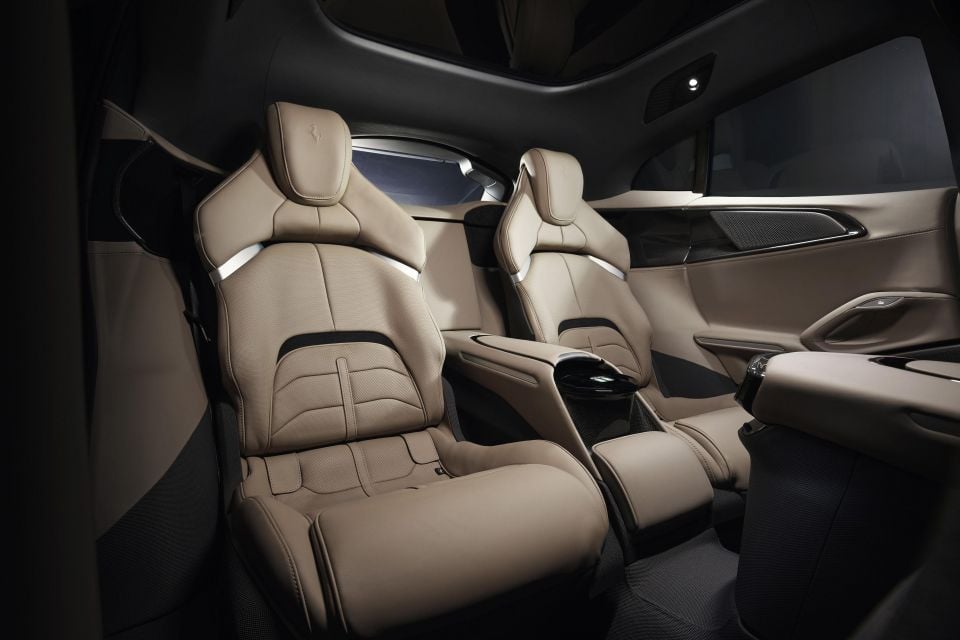
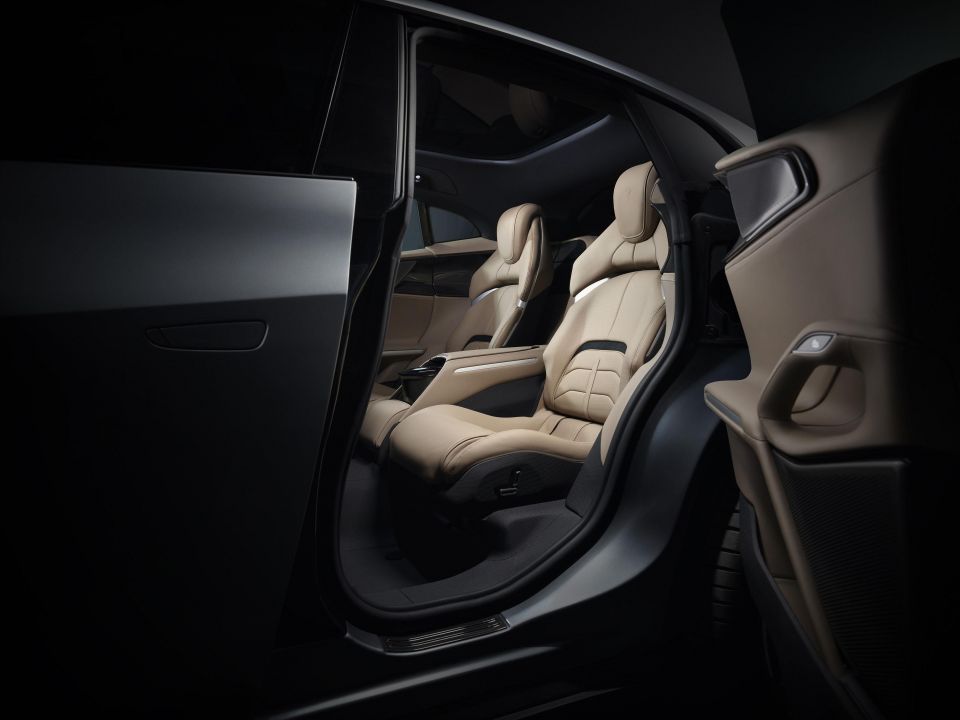
Unlike in most other cars, there is no central display – instead, a motorised control dial allows both the driver and front passenger to control the HVAC system (heating, ventilation and air-conditioning), and other settings.
This concept is repeated in the rear cabin. A strict four-seater, each rear occupant gets their own individual, heavily bolstered rear seat, with a fixed leather rear console dividing them.


Matt Campbell
6 Hours Ago


William Stopford
22 Hours Ago


Josh Nevett
23 Hours Ago


Ben Zachariah
2 Days Ago


CarExpert.com.au
2 Days Ago


Damion Smy
3 Days Ago